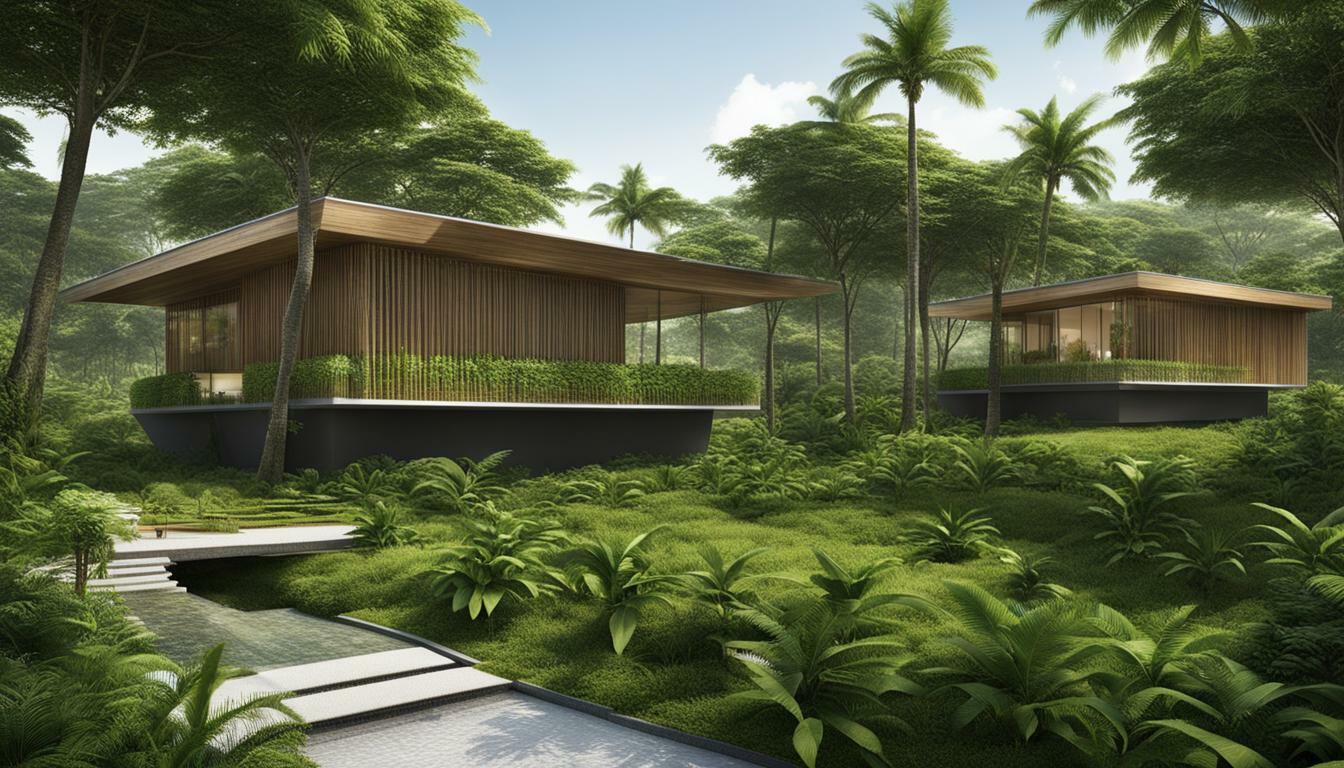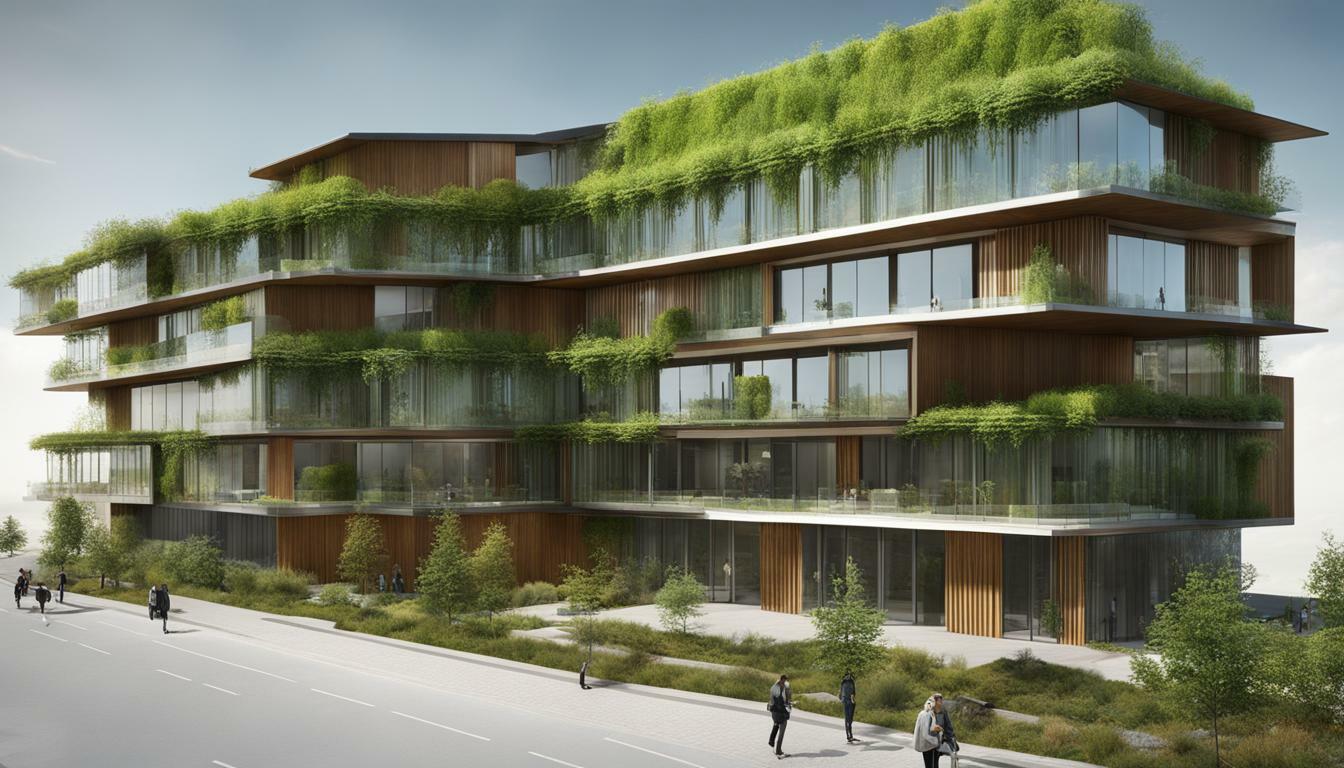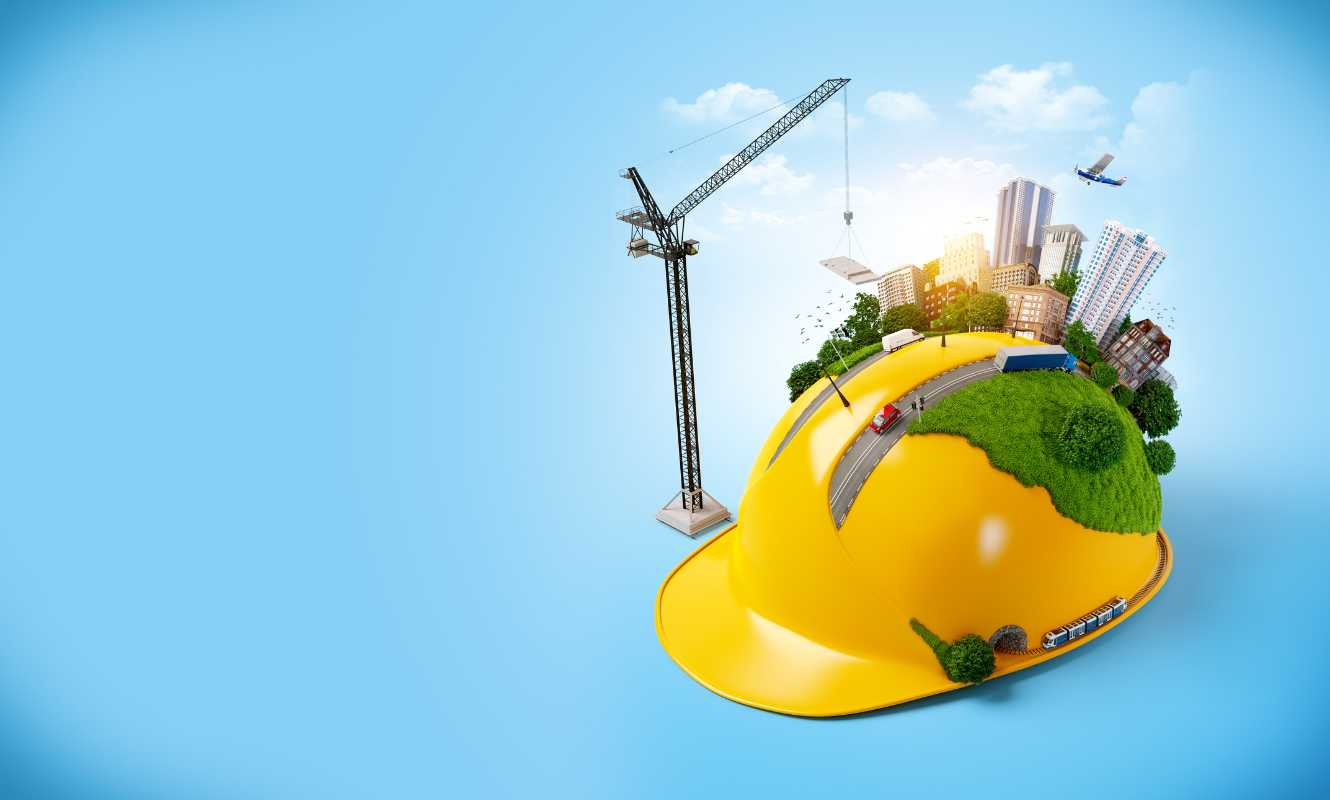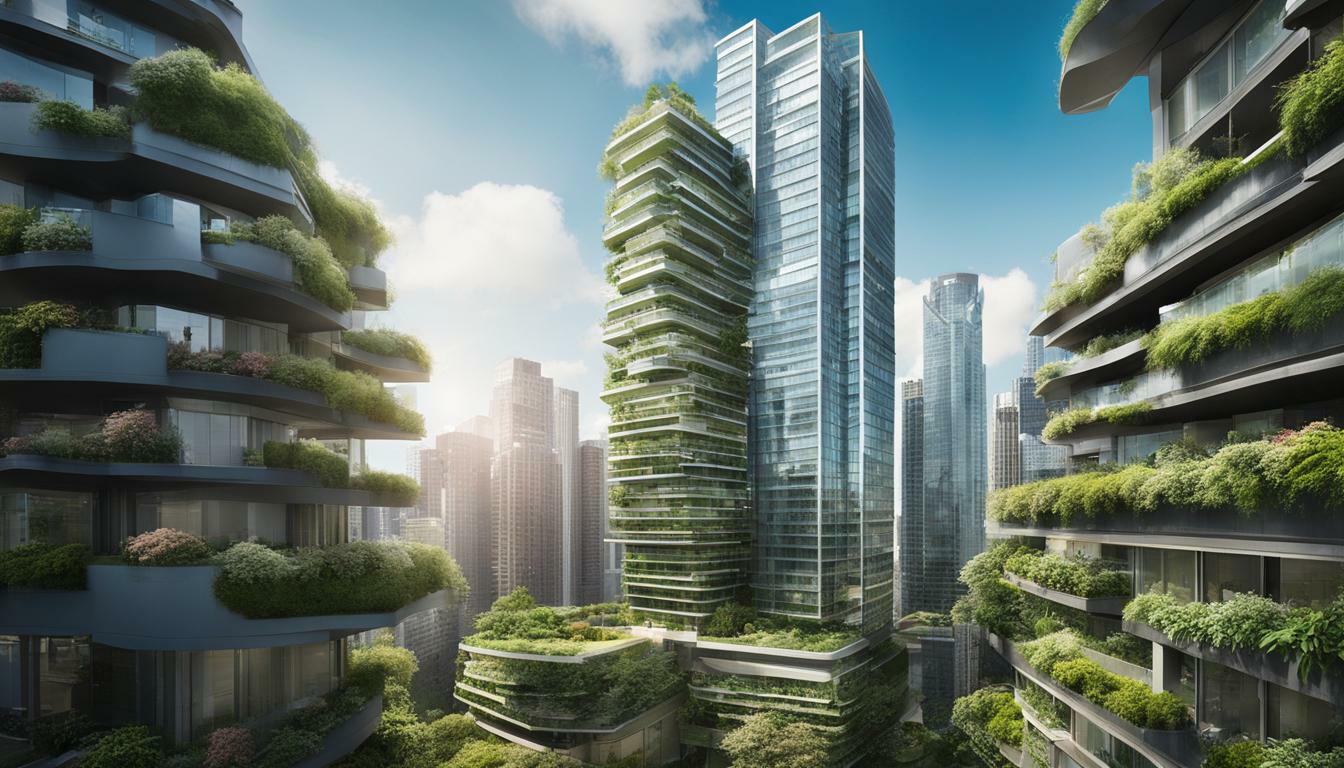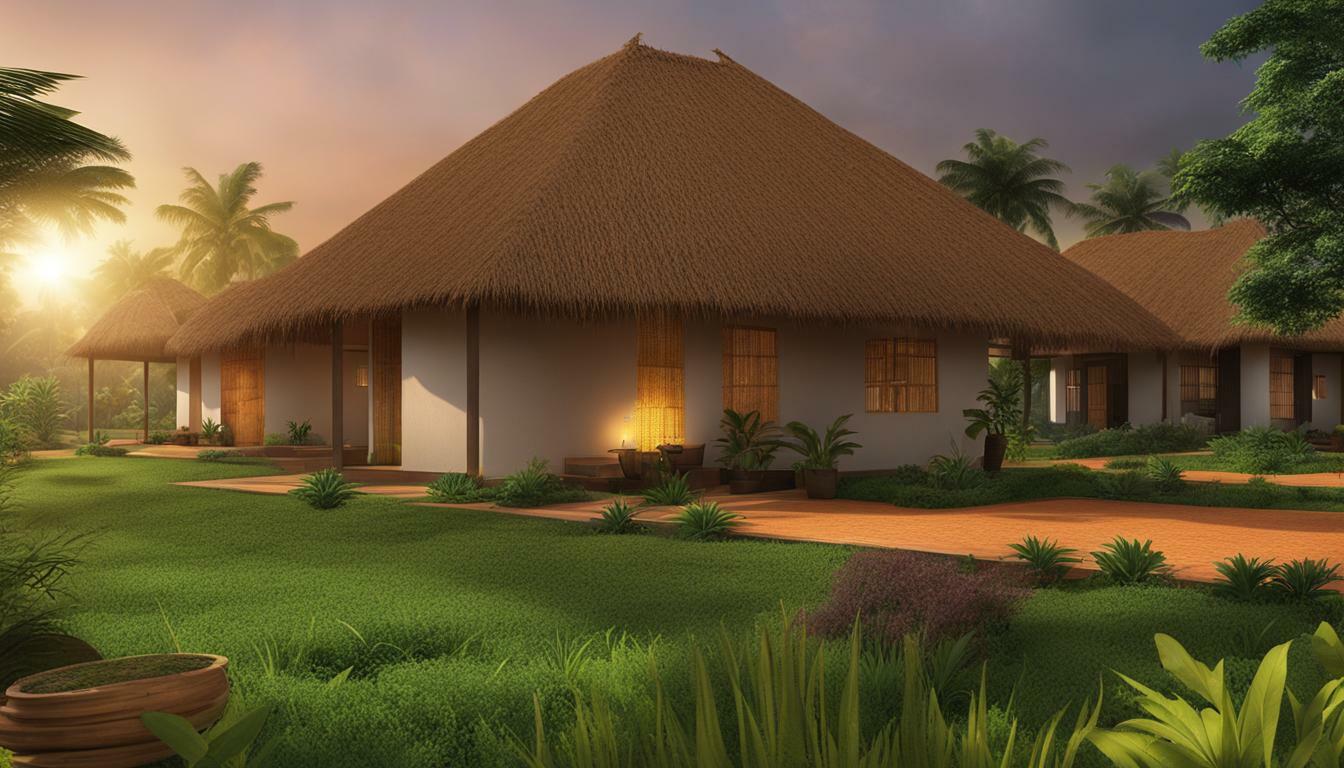El Salvador Green Building History
El Salvador’s journey towards sustainable construction practices and eco-friendly architecture has been shaped by its unique green building history. With a complex history of development and economic challenges, the country has faced obstacles such as poverty, population growth, rural-urban migration, and economic policies that have hindered sustainable development. However, amidst these challenges, El Salvador has emerged as a frontrunner in the Salvadoran green building movement, fostering a strong commitment to eco-friendly architecture and sustainable building practices.
Key Takeaways:
- El Salvador has faced various challenges, including poverty, population growth, and rural-urban migration, in achieving sustainable development.
- Natural disasters, particularly earthquakes, have had a significant impact on the country’s architectural heritage.
- Efforts have been made to preserve and restore historic green buildings in San Salvador, utilizing techniques like wooden frames and metal sheet finishes.
- Building Information Modeling (BIM) technology, specifically Heritage BIM (HBIM), has played a crucial role in improving the conservation and restoration process in El Salvador.
- There is a strong emphasis on raising awareness about cultural heritage and involving local communities in the restoration efforts.
El Salvador’s green building history not only contributes to the preservation of architectural heritage but also promotes sustainable architecture trends and economic development in the country. By adopting eco-friendly practices and incorporating green building technologies, El Salvador aims to create a more environmentally conscious approach to urban design, fostering social and economic well-being.
In conclusion, El Salvador’s commitment to sustainable construction practices and eco-friendly architecture stems from its rich green building history. Through the Salvadoran green building movement, the country strives to create a greener future, emphasizing the importance of preserving cultural heritage, raising awareness, and involving local communities in restoration efforts. By embracing green building technologies and sustainable architecture trends, El Salvador paves the way for a more sustainable and prosperous future.
Challenges to Sustainable Development in El Salvador
Despite facing numerous challenges to sustainable development, El Salvador has made significant strides in environmental design and the adoption of sustainable building methods. The country’s complex history of development and economic challenges, including issues such as poverty, population growth, rural-urban migration, and economic policies, has posed obstacles to achieving sustainable development goals.
El Salvador’s vulnerability to natural disasters, particularly earthquakes, has further impacted its architectural heritage and the preservation of historic buildings. However, efforts have been made to protect and restore these structures, employing techniques such as using wooden frames and metal sheet finishes, which enhance their resilience against seismic activity.
In recent years, El Salvador has also embraced green building initiatives as part of its commitment to sustainable development. The adoption of sustainable building methods has gained momentum, with a focus on incorporating eco-friendly materials, energy-efficient systems, and innovative design practices. This shift towards sustainable architecture not only helps reduce the environmental impact of construction but also promotes healthier living environments for residents.
The Role of Building Information Modeling (BIM) in El Salvador
Building Information Modeling (BIM) technology, particularly Heritage BIM (HBIM), has played a crucial role in the conservation and restoration process in El Salvador. HBIM facilitates the creation of virtual models of historic buildings, enabling architects and preservation experts to analyze, document, and collaborate on restoration projects. By incorporating information about the physical and mechanical properties of these structures, HBIM ensures that restoration efforts not only preserve the architectural heritage but also enhance their structural integrity.
| Benefits of HBIM in El Salvador |
|---|
| 1. Accurate documentation and analysis of historic buildings |
| 2. Enhanced collaboration between architects and preservation experts |
| 3. Improved decision-making in restoration efforts |
| 4. Preservation of cultural heritage for future generations |
With the support of the Salvadoran green building movement, there is a growing emphasis on raising awareness about the importance of cultural heritage and involving local communities in restoration initiatives. Community participation not only fosters a sense of ownership but also ensures that restoration projects align with the needs and aspirations of the people.
In conclusion, El Salvador continues to overcome challenges in sustainable development through its environmental design practices, sustainable building methods, and green building initiatives. By preserving its architectural heritage and adopting innovative technologies like BIM, the country is moving towards a more sustainable and resilient future.
Impact of Natural Disasters on Architectural Heritage
El Salvador’s rich architectural heritage has been significantly affected by natural disasters, prompting efforts to preserve and restore historic green buildings in the capital city. The country’s susceptibility to earthquakes has taken a toll on its architectural treasures, leading to a renewed focus on conservation and restoration.
Despite the challenges posed by these natural disasters, the people of El Salvador have shown resilience and determination in their efforts to protect their cultural heritage. In the face of adversity, innovative techniques and materials have been employed to reinforce and restore the historic buildings that embody the country’s unique architectural identity.
Wooden frames and metal sheet finishes have played a crucial role in safeguarding these historic green buildings, providing structural stability and protecting against further damage. By integrating traditional and modern construction methods, experts have successfully preserved these architectural gems.

The image above showcases the beauty and historical significance of El Salvador’s green buildings. The diverse architectural styles and designs are a testament to the country’s rich cultural heritage. It is through these restoration efforts that future generations can appreciate the beauty of the past and learn from it.
| Historic Green Buildings | Construction Techniques |
|---|---|
| Cathedral of Santa Ana | Wooden frames and metal sheet finishes |
| National Palace of El Salvador | Reinforced concrete and brick |
| Museum of Art of El Salvador | Concrete and glass |
The table above highlights some of the significant historic green buildings in El Salvador and the construction techniques utilized in their restoration. These buildings stand as symbols of the country’s architectural heritage and serve as reminders of the importance of preserving our cultural legacy.
Building Information Modeling (BIM) and Heritage BIM in El Salvador
The adoption of Building Information Modeling (BIM) technology, particularly Heritage BIM (HBIM), has revolutionized the conservation and restoration of buildings, driving sustainable architecture trends in El Salvador. BIM technology allows architects and conservationists to create virtual models of historic structures, providing a comprehensive overview of their physical and mechanical properties. This invaluable tool enables precise analysis, documentation, and planning, contributing to the preservation of El Salvador’s architectural heritage in a sustainable and efficient manner.
With the help of BIM, experts can accurately assess the structural integrity of historic buildings, identifying areas of deterioration and vulnerability. By incorporating information about materials, age, and condition, conservation efforts can be tailored to suit each unique structure, ensuring the use of appropriate sustainable building methods and materials. From traditional techniques, such as wooden frames and metal sheet finishes, to modern solutions like energy-efficient HVAC systems and green roofs, BIM facilitates the integration of sustainable practices into the restoration process.
“BIM technology allows us to go beyond traditional conservation methods and embrace sustainable architecture trends. It provides us with a holistic approach to restoration, considering not only the historic significance of a building but also its environmental impact and energy efficiency.” – Ana Flores, Conservation Architect
Beyond its practical applications, BIM has also played a significant role in raising awareness about the importance of cultural heritage and the need for sustainable practices. By creating visual representations of historic buildings and showcasing their potential for adaptation and reuse, BIM has sparked public interest and community involvement in restoration efforts. This increased engagement fosters a sense of pride and ownership among local communities, ensuring the long-term preservation of El Salvador’s architectural treasures.
Table: Examples of Sustainable Building Techniques in El Salvador
| Technique | Description |
|---|---|
| Passive Cooling | Designing buildings to maximize natural cooling through shading, ventilation, and thermal mass. |
| Rainwater Harvesting | Collecting rainwater for non-potable uses, reducing the demand on freshwater resources. |
| Solar Panels | Installing photovoltaic panels to generate clean, renewable energy for buildings. |
| Green Roofs | Covering rooftops with vegetation to improve insulation, reduce urban heat island effect, and promote biodiversity. |
The integration of BIM technology, sustainable building techniques, and community involvement has charted a new course for El Salvador’s architectural landscape. As the country continues to prioritize sustainable development and the preservation of its cultural heritage, the legacy of its green building history will serve as a guiding light towards a more environmentally conscious and prosperous future.

Recognizing the significance of cultural heritage, El Salvador has fostered a strong green building movement that prioritizes community involvement in restoration efforts. This movement aims to create awareness about the importance of preserving historic buildings and engage local communities in the restoration process, ensuring the sustainable development of architectural heritage for future generations.
One of the key initiatives driving community involvement is the establishment of heritage committees in various cities across the country. These committees, composed of local residents, architects, historians, and government representatives, work together to identify and prioritize buildings of historical and cultural value that require restoration. Through collaborative efforts, they develop restoration plans, seek funding opportunities, and implement sustainable building practices to ensure the preservation of architectural gems.
In order to raise awareness and engage the wider public, educational campaigns and cultural events are organized. These initiatives aim to educate the community about the value of architectural heritage and the benefits of sustainable restoration. Workshops, seminars, and guided tours of restored buildings are conducted to provide a deeper understanding of the historical and cultural significance of these structures.
Involving the local community in restoration efforts not only ensures the preservation of architectural heritage but also fosters a sense of pride and ownership among residents. By actively participating in the restoration process, community members develop a deeper connection with their cultural heritage and contribute to the overall well-being of their neighborhoods. This collaborative approach to restoration serves as a model for sustainable development, promoting a sense of identity and unity among Salvadorans.
Community Involvement in Restoration Efforts: A Key to Sustainable Development
| Benefits of Community Involvement | Challenges and Solutions |
|---|---|
| 1. Preservation of architectural heritage | 1. Lack of funding: Seek partnerships with private organizations and international funding agencies. |
| 2. Transfer of traditional building techniques | 2. Limited technical expertise: Organize skill-sharing workshops and training programs. |
| 3. Social and economic empowerment | 3. Limited community engagement: Conduct awareness campaigns to encourage participation. |
“Engaging the community in restoration efforts not only ensures the preservation of our architectural heritage but also promotes a sense of pride and belonging among Salvadorans.” – Ana Martinez, Heritage Committee Member
Educational Campaigns and Cultural Events
- Workshops and seminars on sustainable restoration practices
- Guided tours of restored buildings
- Cultural festivals celebrating architectural heritage
- Collaborative art exhibitions
- Historical storytelling events
Through these initiatives, El Salvador’s green building movement continues to make a positive impact by raising awareness about the importance of architectural heritage and actively involving the community in restoration efforts. By preserving the past, Salvadorans are building a sustainable future that embraces their cultural identity and promotes the overall well-being of their communities.

The integration of sustainable architecture practices into El Salvador’s urban design has not only had a positive environmental impact but has also played a significant role in driving economic development. The country’s green building history showcases the importance of adopting eco-friendly construction methods and promoting sustainable architecture trends.
El Salvador’s commitment to sustainable development is evident in its efforts to overcome challenges such as poverty, population growth, and rural-urban migration. By embracing green building initiatives and sustainable building methods, the country has been able to address these challenges while creating a more environmentally conscious approach to urban design.
One of the key factors contributing to El Salvador’s sustainable architecture trends is the preservation and restoration of its architectural heritage. The country has faced numerous natural disasters, particularly earthquakes, that have posed a threat to its historic green buildings. However, through the use of techniques like wooden frames and metal sheet finishes, these structures have been safeguarded, ensuring their longevity and contribution to the cultural heritage of San Salvador.
| Benefits of Sustainable Architecture | Examples |
|---|---|
| Reduced environmental impact | The use of energy-efficient materials and renewable energy sources |
| Economic growth | The creation of green jobs and increased investment in sustainable development projects |
| Improved public health | Designing buildings that promote natural ventilation, daylighting, and access to green spaces |
Moreover, El Salvador has embraced the use of Building Information Modeling (BIM) technology, specifically Heritage BIM (HBIM), to enhance the conservation and restoration process. By creating virtual models of buildings and incorporating information about their physical and mechanical properties, architects and conservation experts can make informed decisions, ensuring the preservation of architectural heritage while adopting sustainable practices.
The Salvadoran green building movement has played a crucial role in raising awareness about the significance of cultural heritage and involving local communities in restoration efforts. This community engagement fosters a sense of pride and ownership, creating a sustainable legacy for future generations. It further strengthens the link between sustainable architecture and economic development, as the restoration of historic buildings can attract tourism, generate local employment opportunities, and contribute to the overall growth of the economy.

El Salvador’s commitment to sustainable architecture and its green building history demonstrates not only its environmental consciousness but also its drive towards economic prosperity. By combining heritage preservation, technological advancements like BIM, and community involvement, the country continues to pave the way for sustainable development, setting an example for others to follow.
Conclusion
El Salvador’s green building history has paved the way for eco-friendly architecture and the adoption of innovative green building technologies, showcasing the country’s commitment to sustainable development. Despite the complex challenges of poverty, population growth, and rural-urban migration, El Salvador has made significant efforts to overcome obstacles and promote sustainable practices.
The impact of natural disasters, particularly earthquakes, on the country’s architectural heritage has led to the implementation of preservation and restoration techniques. Historic buildings in San Salvador have been preserved using wooden frames and metal sheet finishes, ensuring the conservation of El Salvador’s unique cultural heritage.
The use of Building Information Modeling (BIM) technology, specifically Heritage BIM (HBIM), has revolutionized the conservation and restoration process. Virtual models of buildings, combined with information about their physical and mechanical properties, have enhanced the efforts of sustainable architecture trends in El Salvador.
Furthermore, the involvement of local communities in restoration efforts and the promotion of cultural heritage awareness have been crucial in driving the Salvadoran green building movement. This community engagement has not only fostered a sense of pride and ownership but has also contributed to the social and economic well-being of the country.
In conclusion, El Salvador’s green building history stands as a testament to its commitment to sustainable development. Through eco-friendly architecture and the adoption of green building technologies, the country continues to strive towards a more environmentally conscious future, setting an example for others to follow.
FAQ
What is the significance of El Salvador’s green building history?
El Salvador’s green building history is significant in promoting sustainable construction practices and the emergence of eco-friendly architecture in the country.
What are the challenges to sustainable development in El Salvador?
El Salvador faces challenges such as poverty, population growth, and rural-urban migration that hinder sustainable development and environmental design.
How have natural disasters impacted El Salvador’s architectural heritage?
Natural disasters, particularly earthquakes, have had a significant impact on El Salvador’s architectural heritage, leading to efforts to preserve and restore historic green buildings in San Salvador.
What is the role of Building Information Modeling (BIM) technology in El Salvador?
Building Information Modeling (BIM), specifically Heritage BIM (HBIM), has played a role in improving conservation and restoration processes by creating virtual models of buildings and incorporating information about their physical and mechanical properties.
How is community involvement promoted in restoration efforts in El Salvador?
Restoration efforts in El Salvador aim to raise awareness about cultural heritage and involve local communities in the preservation and restoration processes, contributing to the Salvadoran green building movement.
How does sustainable architecture contribute to economic development in El Salvador?
Sustainable architecture, as part of El Salvador’s green building history, promotes a more environmentally conscious approach to urban design, leading to social and economic well-being in the country.




